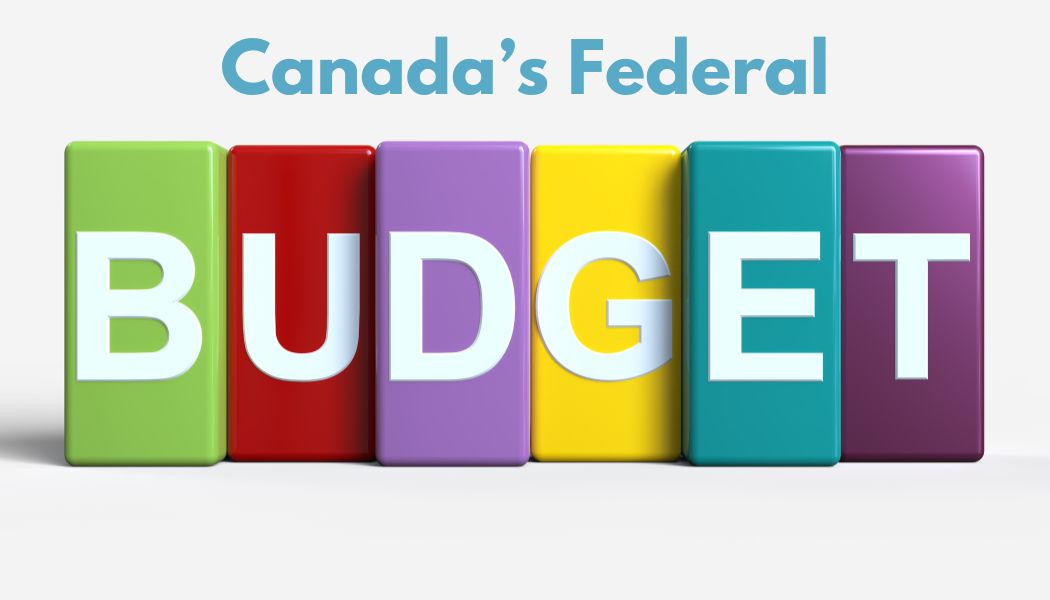There are years when many of the federal budget items passed don’t really affect most Canadians’ personal finances. This year isn’t one of them.
We’ll break down the budget points, how they’ll affect the average Canadian, and when they’ll be in effect (if known).
Capital Gains
Capital gains represent the taxable portion of investment revenue. Currently only 50% of an investor’s investment gains are taxable, with an individual lifetime exemption of $1million (that 50% you don’t pay tax on).
The 50% inclusion rate will be increased to 67%, but only for individuals who realize gains above $250,000 annually. Who’s affected? Investors who have millions invested and are living off the investment gains, or investment/vacation property owners who sell their property and realize a gain over $250,000. When will this take effect? This change affects capital gains realized on or after June 25, 2024.
This change will apply to not only individual investors but also those receiving via a partnership or trust.
The Lifetime Capital Gains Exemption has been increased to $1.25million, to accommodate the increase in the inclusion rate for those higher gains. When will this take effect? This change will also affect dispositions that occur on or after June 25, 2024.
Government Benefits & Supports
Expanding the Disability Supports Deduction (DSD) which allows individuals who have an impairment in physical or mental functions to deduct certain expenses that enable them to earn business or employment income or to attend school. This budget intends to amend the Income Tax Act to make additional expenses eligible for the DSD, including service animals trained to perform specific tasks for people with severe impairments; alternative computer input devices, such as assistive keyboards, braille display, digital pens and speech recognitions devices; and ergonomic work chairs and bed positioning devices, including related assessments. When will this take effect? This would apply to the 2024 and subsequent taxation years.
Further expansion and the introduction of new support spending for persons with disabilities was also announced. An additional $821 every year will be provided to workers with disabilities through the Canada Workers Benefit Disability Supplement, beyond the Canadian Workers Benefit in place. This is in addition to the new Canada Disability Benefit, filling a gap in the financial security between the Canada Child Benefit and the Old Age Security for persons with disabilities and is intended to supplement existing income support measures. This plan’s designed based on a maximum benefits amount of $2,400 per year for low-income persons with disabilities between the ages of 18 and 64. When will this take effect? The Canada Disability Benefit Act will come into force in June 2024 in order for payments to begin July 2025.
The government is also building a comprehensive national pharmacare program, introducing legislation to help make essential medications more accessible and affordable. Starting in fiscal 2024-25, the first phase will support access through funding of contraceptives and diabetes medication. This aligns with the Canada Dental Benefit plan which started its roll-out in December 2023, and by 2025 will aim to provide dental coverage to all eligible Canadian residents.
Registered Education Savings Plan contract holders will no longer need to apply for the Canada Learning Bond (CLB), as this Budget announces the government’s intention to introduce automatic enrolment in the CLB for eligible children who do not have an RESP opened for them by the time the child turns four. This would see all eligible children born in 2024 or later having an RESP automatically opened for them and the eligible CLB payments would be auto-deposited in these accounts (note that to open an RESP and apply for benefits, a Social Insurance Number is required for the child). When will this take effect? We’ll see this starting in 2028-9 for those children born 2024 or later.
Canada Pension Plan (CPP) technical amendments are being proposed, including a top-up to the Death Benefit for certain contributors; a partial children’s benefit for part-time students; extended eligibility for disabled contributors children’s benefit when a parent reaches age 65; and to end the eligibility for survivor pension to people who are legally separated after a division of pensionable earnings.
Guaranteed Income Supplement, a benefit for low-income seniors receiving Old Age Security, would be able to include the entire GIS benefit received, along with any social assistance and workers’ compensation payments to reduce the alternative minimum tax on their income taxes. When will this take effect? These amendments will apply to the 2024 and subsequent tax years.
Charitable Giving
This latest budget proposes a change in the tax treatment of charitable donations to allow individuals to claim 80% (instead of 50%) of the Charitable Donation Tax Credit when calculating the Alternative Minimum Tax.
Housing & Home Ownership
This Budget proposes an additional increase to the withdrawal limit for the Home Buyer’s Plan from $35,000 to $60,000. Last year’s budget introduced a bump from $25,000 to $35,000, along with the addition of the First-Time Homebuyers Savings Account (FHSA), promoting individuals to save for home ownership. When will this take effect? This would apply to the 2024 and subsequent calendar years with respect to withdrawals made after April 16, 2024. This change also proposed to temporarily defer the start of the 15-year repayment period by an additional three years for participants making a first withdrawal between January 1, 2022 and December 31, 2025, resulting in the 15-year repayment period starting in the fifth year following the year in which the withdrawal was made.
With interest rates for mortgages posing additional challenges to home ownership, this Budget announces changes to the Canadian Mortgage Charter to allow 30-year mortgage amortization for first-time home buyers purchasing newly constructed homes. When will this take effect? This new insured mortgage product will be available to first-time home buyers starting August 1, 2024.
Looking to add a secondary suite to your home? This Budget proposes to provide $409.6 million over four years starting in 2025 to the Canada Mortgage and Housing Corporation to launch a new Canada Secondary Suite Loan Program, enabling homeowners to access up to $40,000 in low-interest loans to add secondary suites to their homes. Further details to follow.
______________
These are highlights as they relate specifically to an average Canadian family. Many other parts of the Budget affect corporations, entrepreneurs, tax avoiders, specific initiatives and more,
Some of the spending by the numbers includes:
- $4.5 billion over five years to support housing needs for low-income Canadians and refugees including $1.2 billion towards Canada’s Homelessness Plan and $1.1 billion to extend housing support to asylum seekers.
- $4 billion over five years to increase housing supply including $1.5 billion for a new Housing Infrastructure Fund and $1 billion to expedite the construction of new purpose-built apartments.
- $8.1 billion in new defence spending over five years. This would bring Canada’s defence spending up to 1.76% of GDP by fiscal 2029-30, a big step closer to meeting the NATO target of 2%.
- Starting in fiscal 2024-25, the government will support access through funding of select prescription medications. The new program comes with a price tag of $1.5 billion over five years.
- Canada’s new disability benefit was another hefty line item, securing $4.9 billion over five years. The program includes payments for eligible Canadians beginning July 2025, and amendments to eligible expenses for disability supports deduction.
- Budget 2024 announces the creation of a National School Food Program, which will provide $1 billion over five years to Employment and Social Development Canada, Crown-Indigenous Relations and Northern Affairs Canada, and Indigenous Services Canada, starting in 2024‑25, to work with provinces, territories, and Indigenous partners to expand access to school food programs. This includes investments for First Nations, Inuit, and Métis communities as well as Self-Governing and Modern Treaty Partners, many of whom have some of the highest rates of food insecurity in Canada.





0 Comments